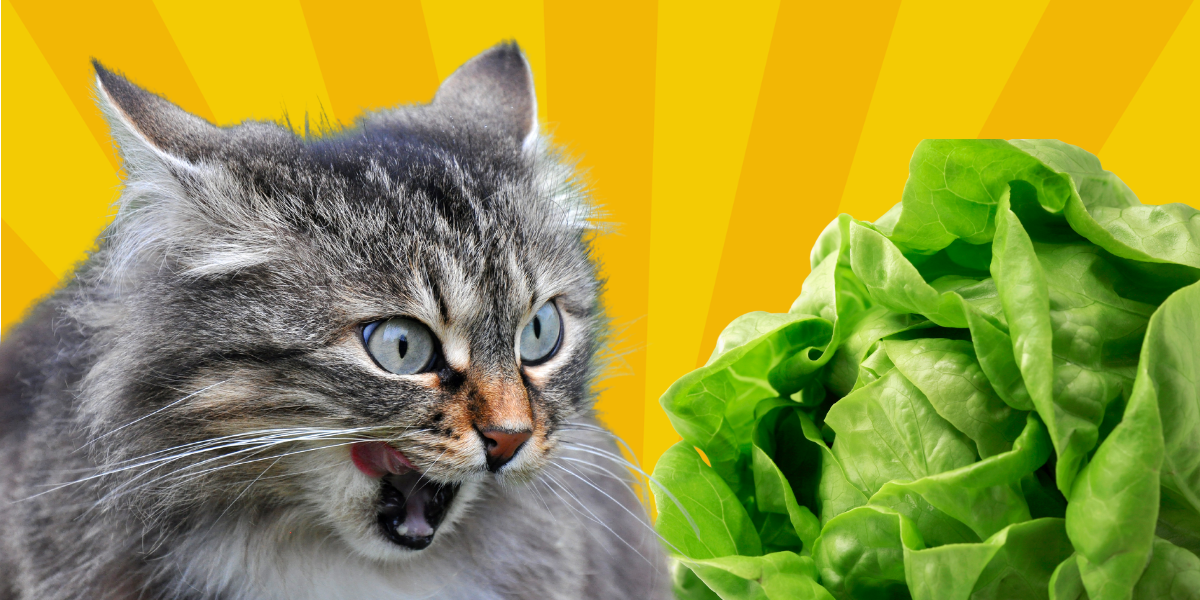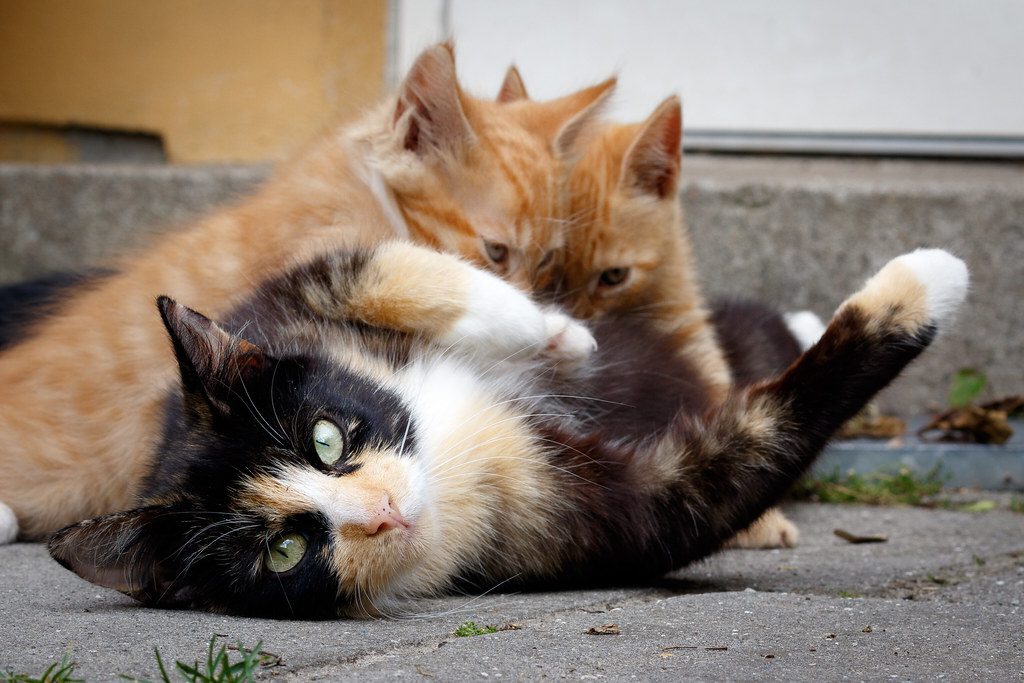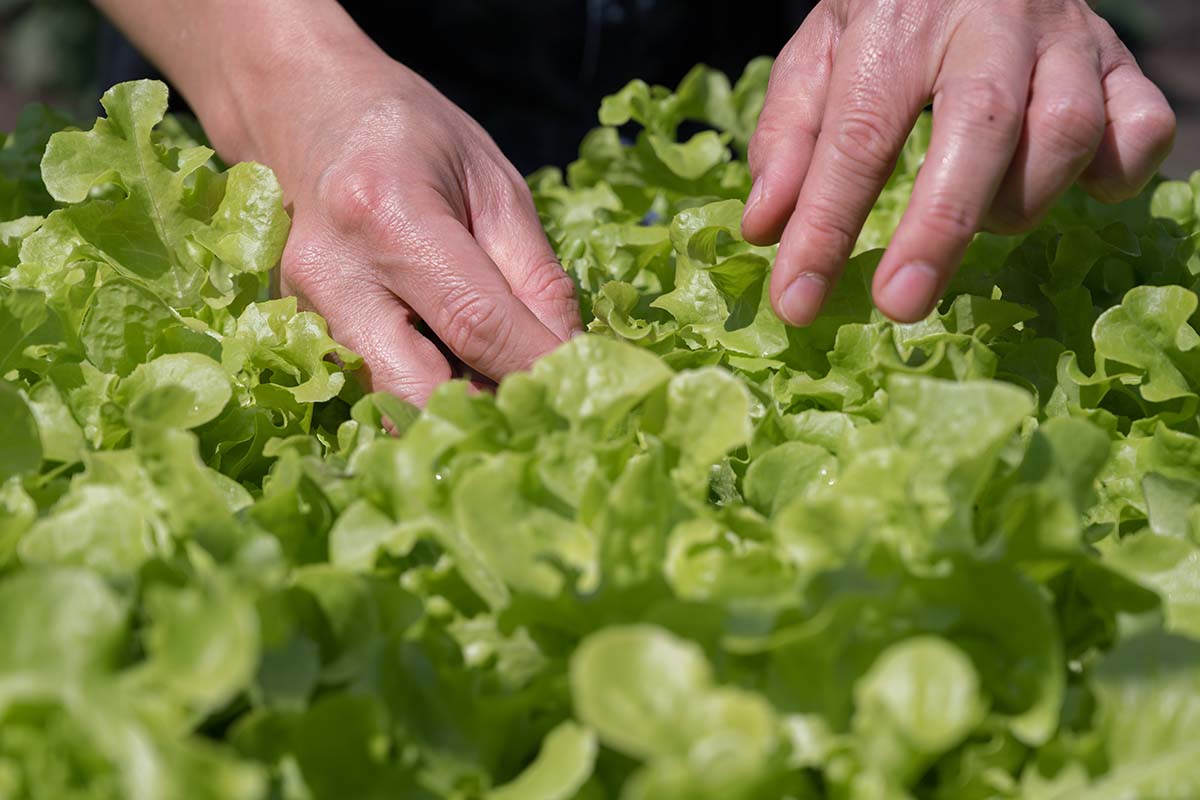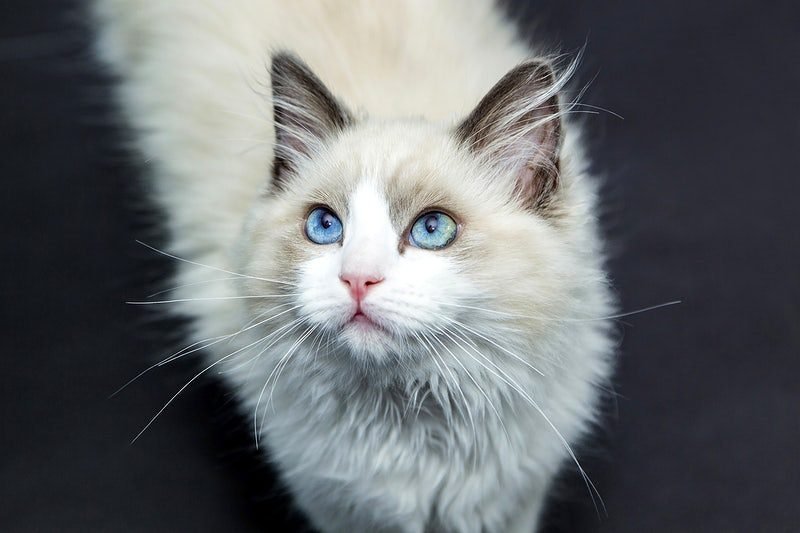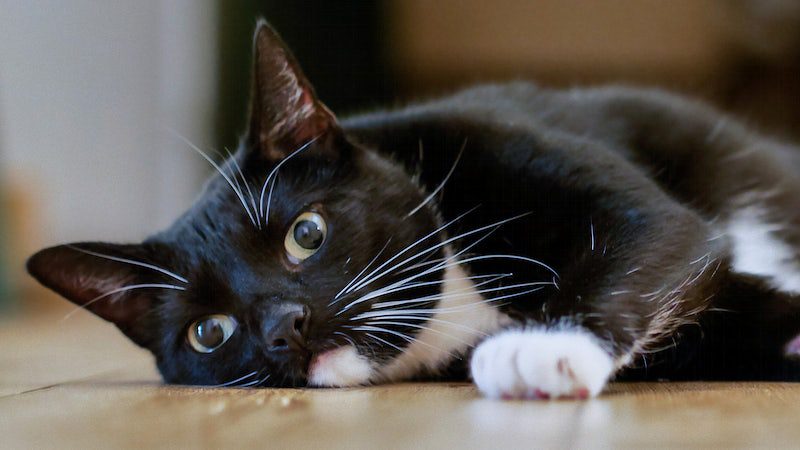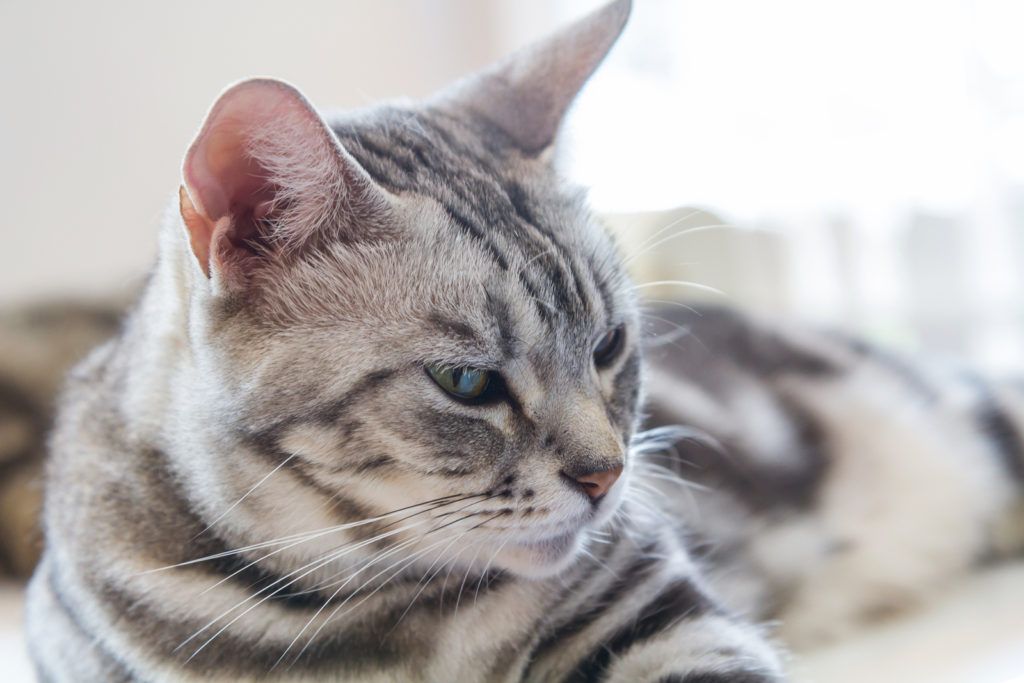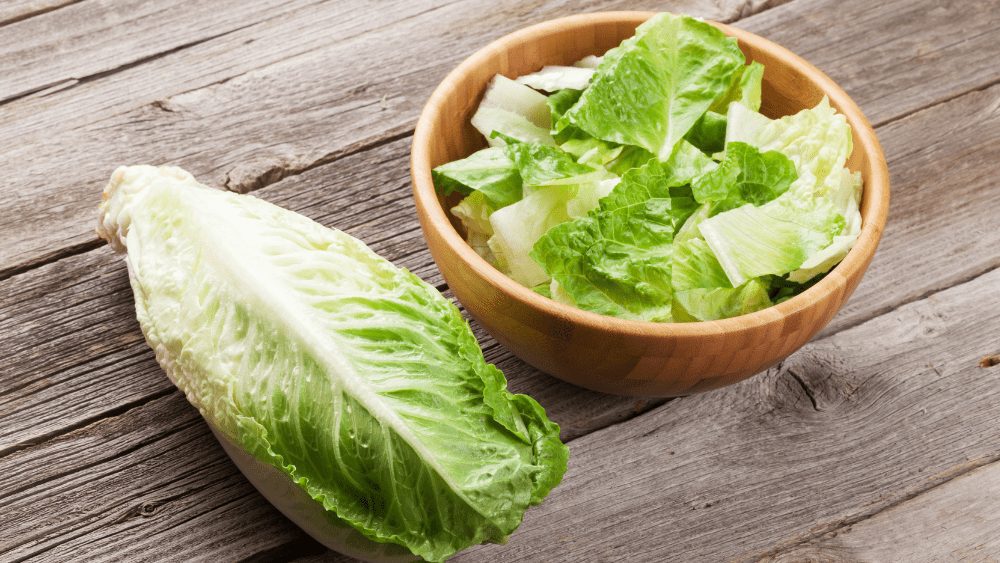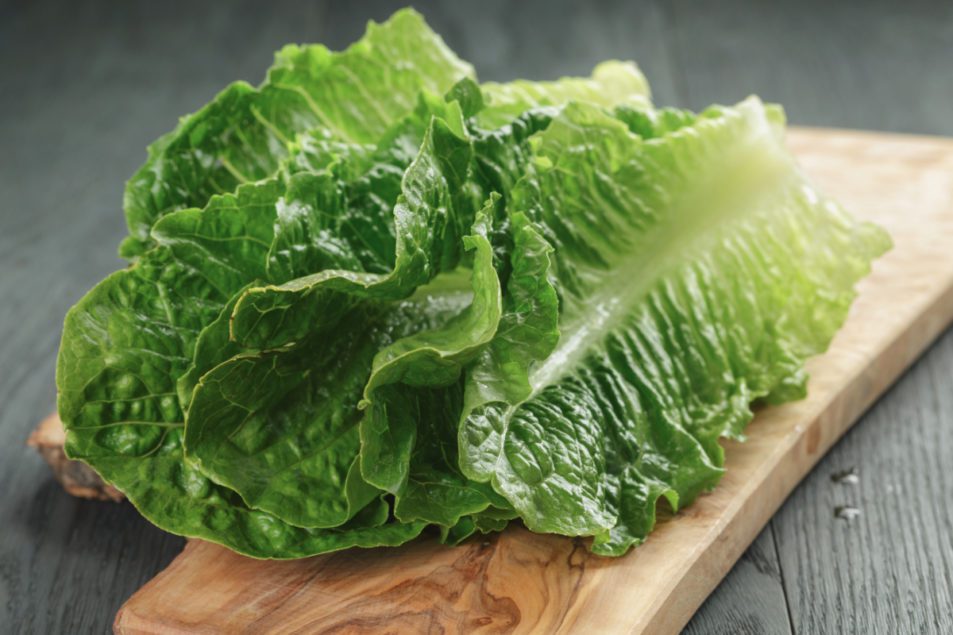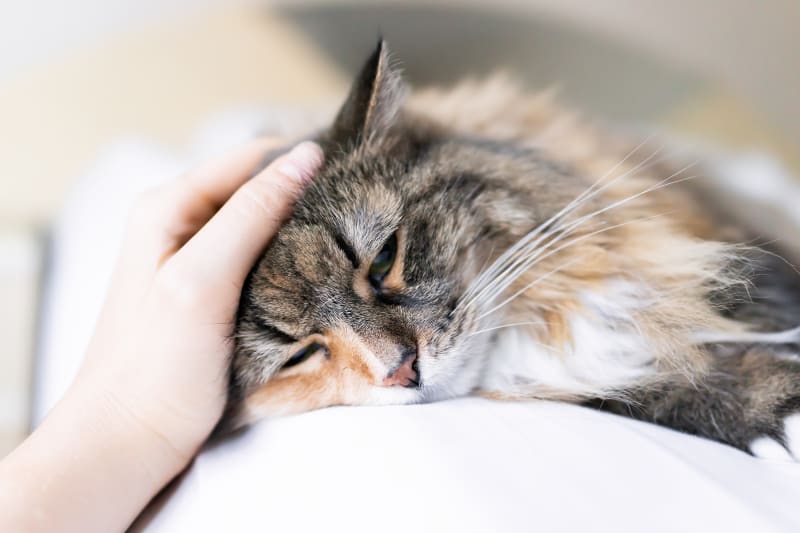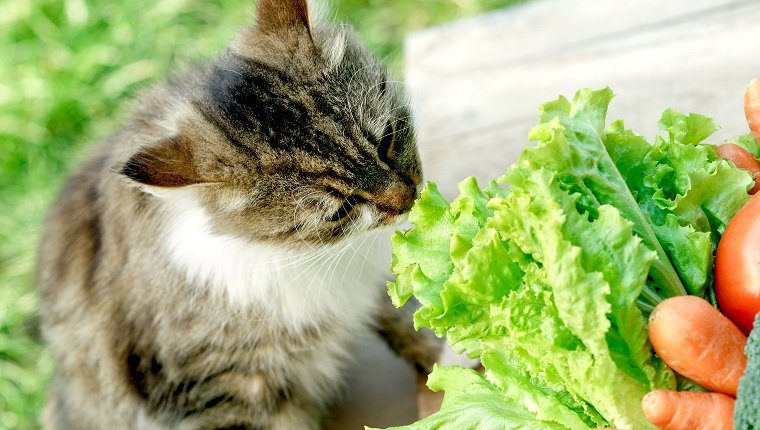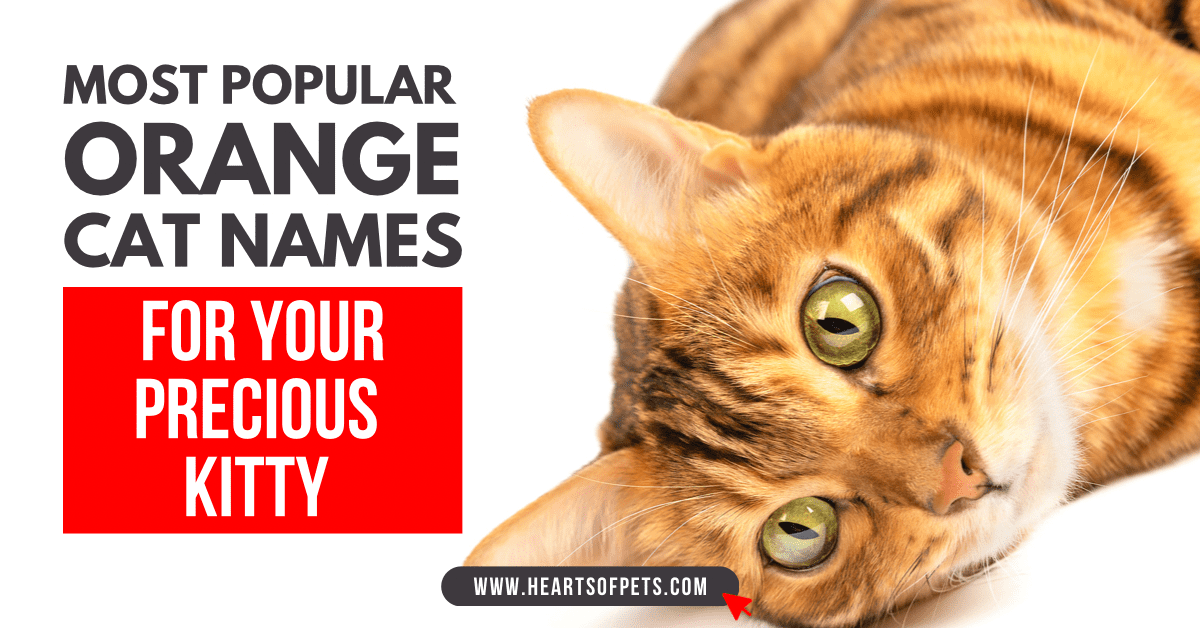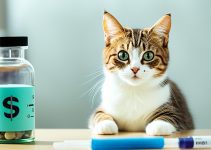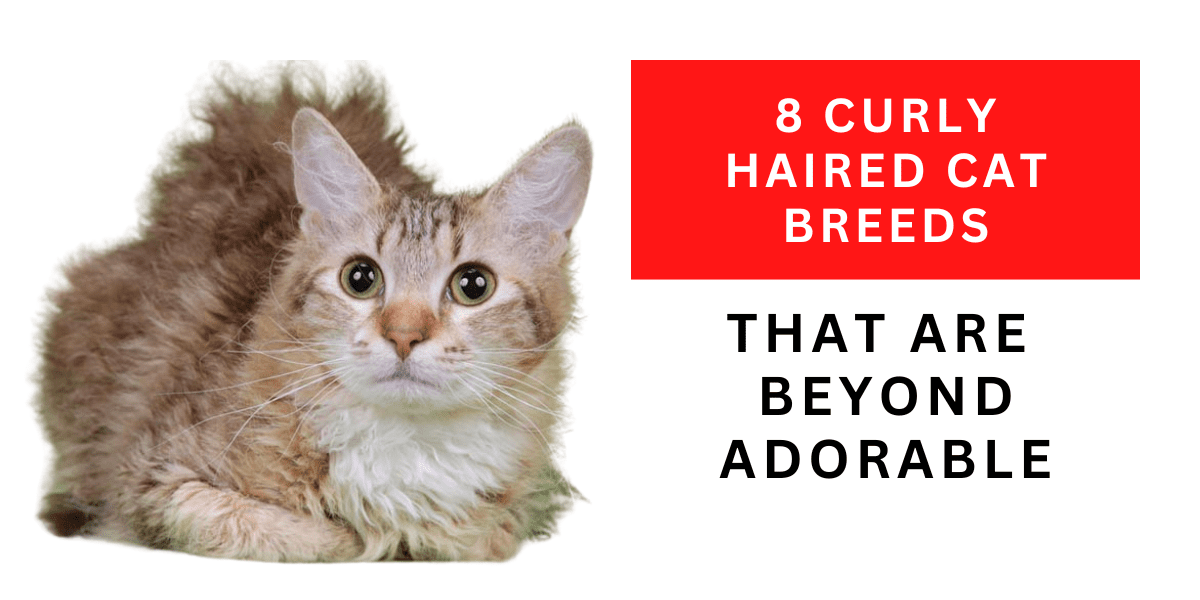Can cats eat lettuce? Lettuce can be essential to your cat’s diet, but it should be limited. Learn how to tell the difference between lettuce and other vegetables to keep your cat healthy and happy. Cats are carnivores, meaning they can only eat meat and animal-based products, not the greens you’re craving to add to your salad. That doesn’t mean you can’t give your cat vegetables in the form of food made with vegetables—a common question is whether or not cats can eat lettuce.
Cats can be picky eaters at times, and just like humans, this can be frustrating to their owners. If you’re wondering if your feline friend can eat lettuce, you’re not alone; many cat owners want to know the answer to this question. Luckily, there are plenty of ways to ensure that your cat will get the nutrition he needs, even if he’s not interested in eating his greens.
Things to Know Before Feeding Cat Lettuce
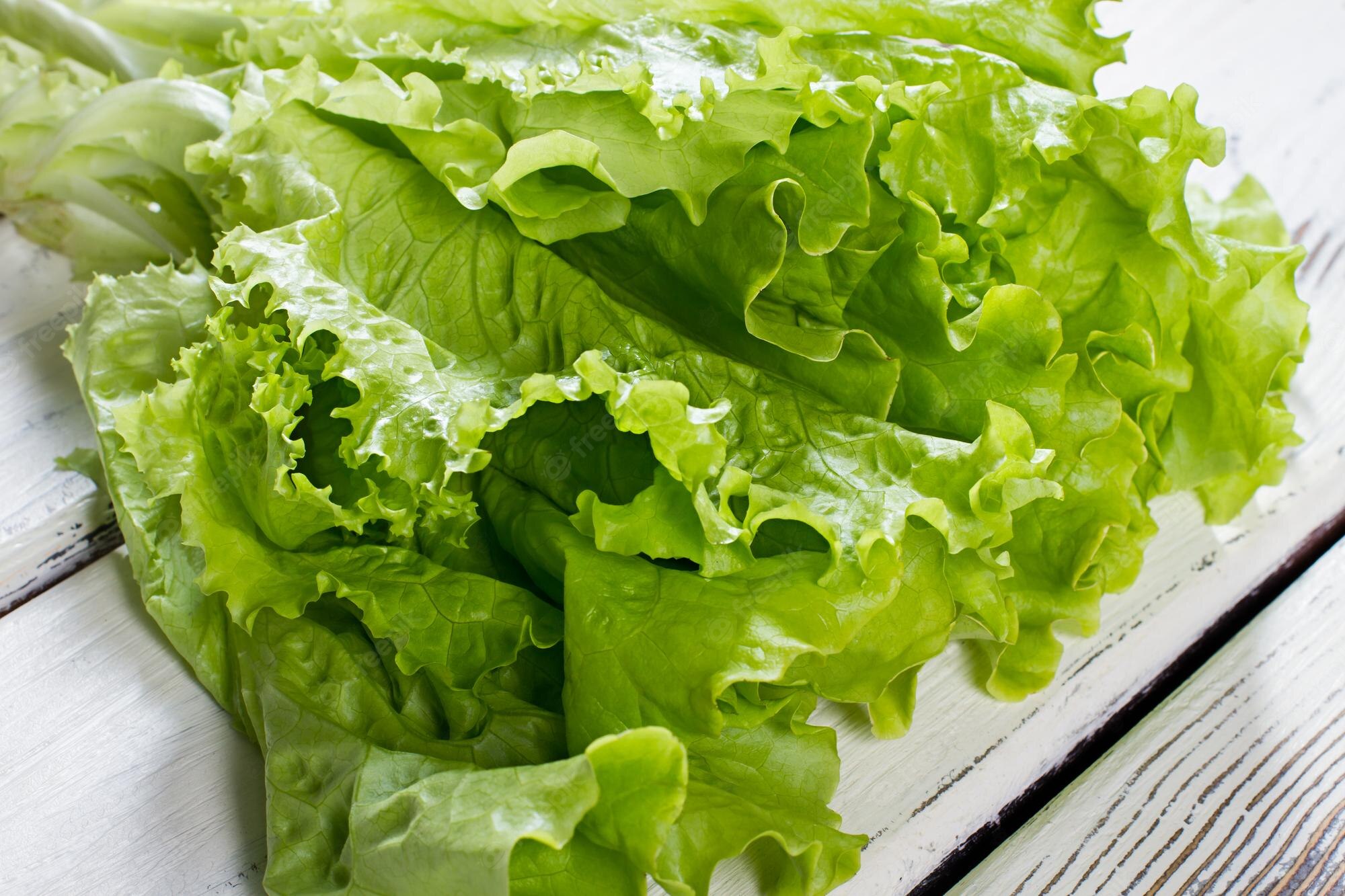
Lettuce is mostly water, so it’s not surprising that cats would be attracted to it. However, too much lettuce can cause digestive upset in cats. So while they may enjoy eating lettuce, they shouldn’t have too much. Feed your cat its regular cat food diet and only allow them to eat dark leafy vegetables or other lettuce sparkingly.
It’s recommended to feed no more than two cups of fresh or frozen veggies daily; feeding your furry friend any more will lead to unwanted side effects like diarrhea or may make your cat throw up. If you catch your cat eating lettuce, it’s not necessary to panic; it’s perfectly normal. Simply take it away and steer them toward wet food or a different treat instead.
If you’ve been giving your fresh cat greens without these adverse side effects, there might be something wrong with the cat, such as diabetes mellitus or an intestinal parasite like tapeworms.
Does your cat need lettuce?
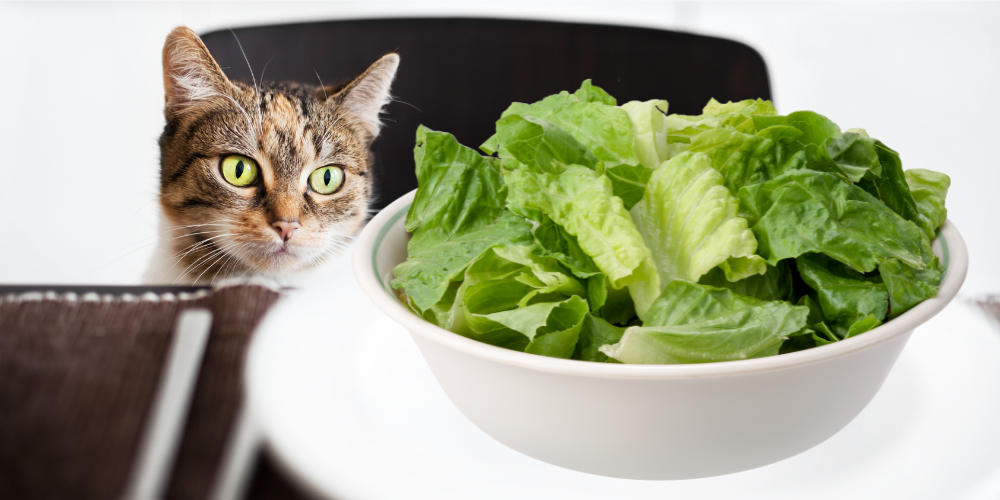
Contrary to popular belief, cats are not carnivores– cats are obligate carnivores. This means their bodies are designed to digest and use only animal-based proteins, and they cannot correctly digest plant-based proteins or carbohydrates. So, while a small amount of lettuce probably won’t hurt your cat, it’s not providing them with any nutrients they need.
Many veterinarians recommend you avoid feeding your pet too much lettuce because it can cause digestive issues like vomiting and diarrhea. For the best diet for your kitty friend, talk to your vet about what foods are good for them.
Why Cats Love And Need Some Greens In Their Diet
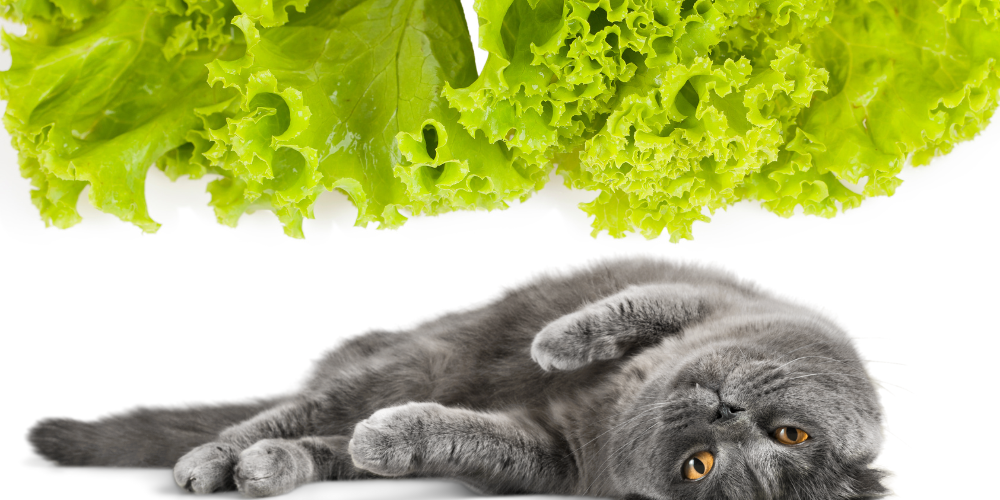
Most cats love the taste of fresh greens and will eagerly munch on them if given a chance. While some people think that lettuce is not nutritious enough for cats, the truth is that it contains several essential vitamins and minerals. Greens are an integral part of a healthy diet for all cats. However, too much can lead to digestive upset in sensitive felines.
A better option is to offer a few leaves here and there as an occasional treat rather than feeding whole heads of lettuce regularly. Dark lettuce is a low-calorie food full of dietary fiber for humans but doesn’t need to be a big part of your feline’s diet.
What Kind of Lettuce Is Best For Your Cat?
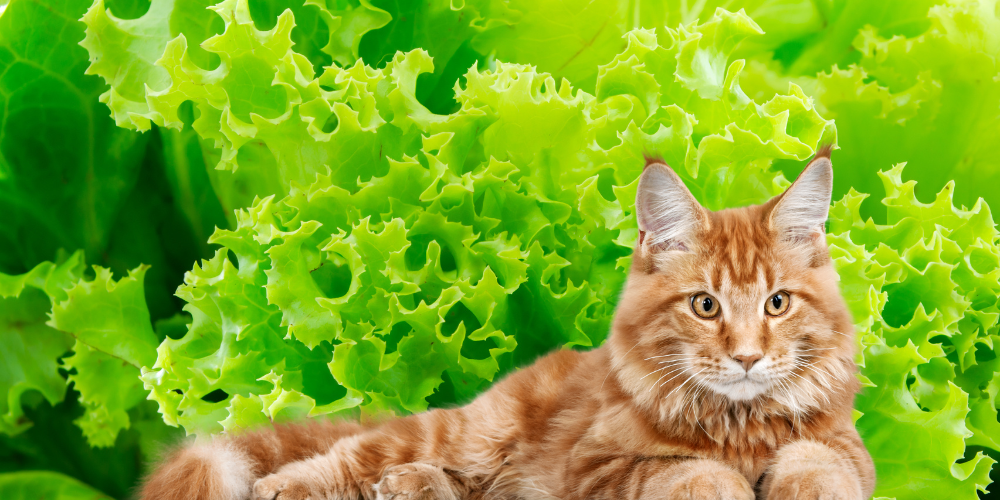
If you’re wondering whether or not you can feed your cat lettuce, the answer is yes – but only certain types of lettuce varieties. Iceberg lettuce, for example, is low in nutrients and can cause digestive upset, so it’s best to avoid this type. Romaine lettuce is a better option as it contains vitamins A and C, folic acid, calcium, and potassium.
However, even though romaine lettuce is safe for cats to eat, it shouldn’t make up a large part of their diet. Certain types of lettuce, such as spinach, bok choy, and dandelion greens, can be eaten in moderation as they contain all the nutrients that help cats and humans maintain a healthy weight.
If you’re unsure how much lettuce your cat can eat, seek veterinary advice. Vets can give pet parents a better idea of what a cat’s digestive system can handle. After all, no one wants to make their cat sick!
Benefits Of Lettuce For The Cats
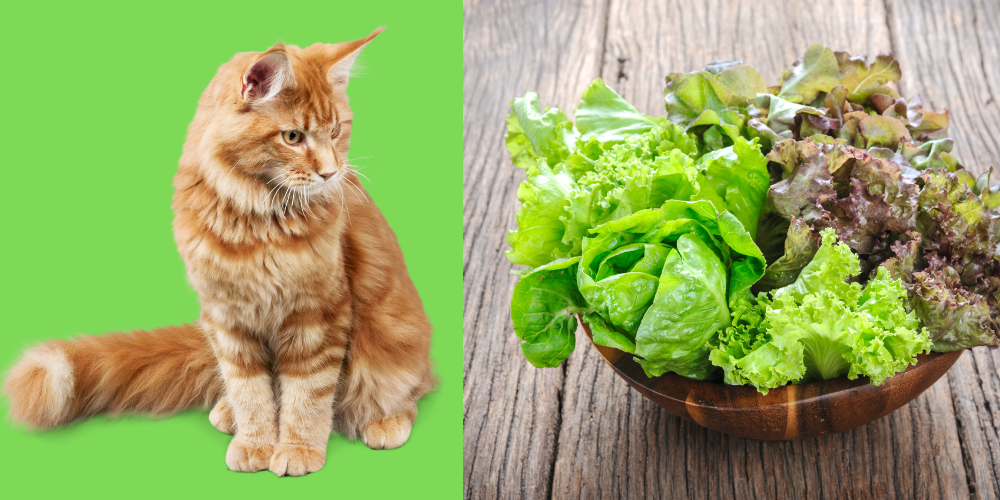
According to the American Society for the Prevention of Cruelty to Animals (ASPCA), lettuce is not toxic to cats. There are some benefits of feeding your cat lettuce. It provides vitamins A, C, E, and K, which help prevent degenerative diseases like heart disease.
It also contains folic acid, which prevents anemia in pregnant women, and other nutrients that help maintain healthy bones and teeth.
- Romaine lettuce is much better for cats because it has more protein and vitamins than iceberg lettuce and is a healthier option overall since it contains less water.
- If you want to give your cat some leafy greens, make sure the green vegetables are cooked or go with romaine or spinach leaves instead of lettuces like cabbage which can cause stomach upset in your pet.
It’s best to avoid feeding your feline friends raw lettuce, but if you decide to share these types of vegetables with them, remember they must be cooked first.
Things To Take Care Of While Giving Lettuce To Cats
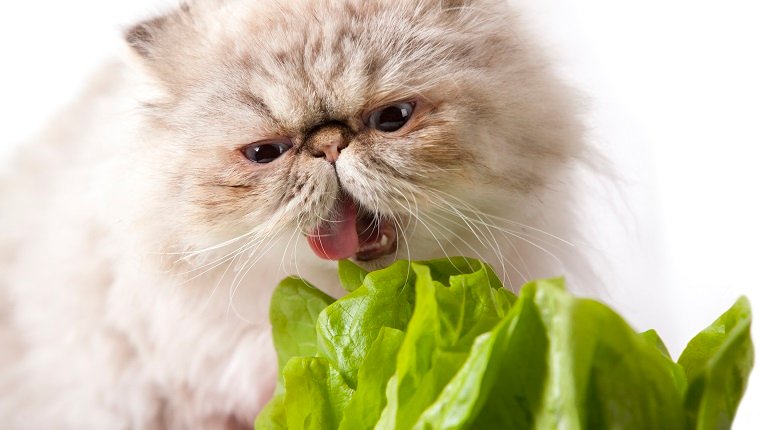
Although cats are carnivores, they are known to nibble on greens from time to time. While there’s no harm in giving your cat a few leaves of lettuce as a treat, there are a few things you should keep in mind. Ensure the lettuce is washed thoroughly to remove pesticides or other harmful chemicals. Chop the lettuce into small pieces so your cat doesn’t choke on it. Give only a few leaves at a time because too much might upset their stomachs.
If your cat has an upset stomach, don’t feed them anymore until they recover. If your cat struggles to digest lettuce leaves, you’ll know that providing them isn’t the best idea, even though it is perfectly safe for many cats.
Lettuce Contain A lot Of Water
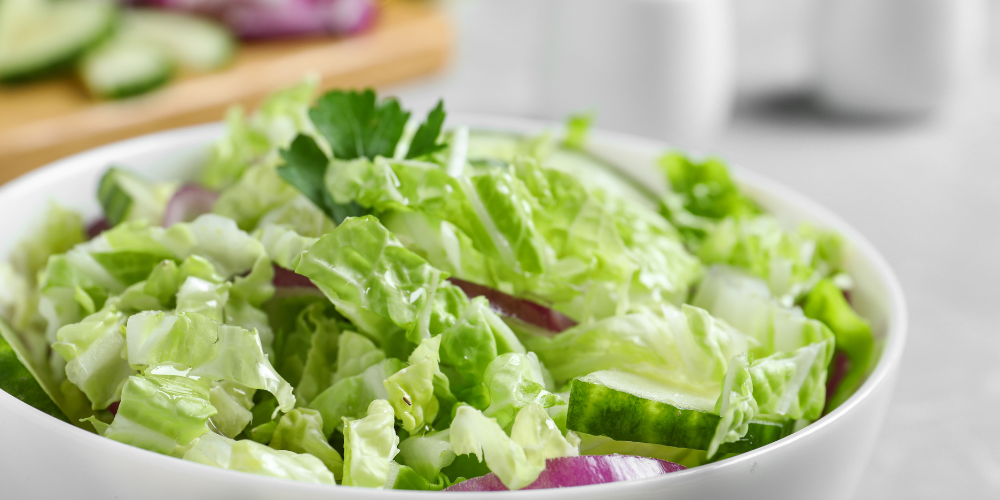
Many people think that since cats drink very little water, they must not need much in their diet. However, this isn’t the case. While it’s true that cats don’t require a lot of water, they do need some in their diet to stay healthy. Lettuce is a good water source for cats and can help them stay hydrated. This will be an excellent health benefit if your cat likes to eat cut lettuce.
When you see cats eating grass outside, it’s usually for the same reasons. Pet owners, you can breathe a little easier knowing it’s safe for your cat, even if it’s not what you’d prefer your cat to eat.
Lettuce May Help Your Cat Ignore Your Houseplants
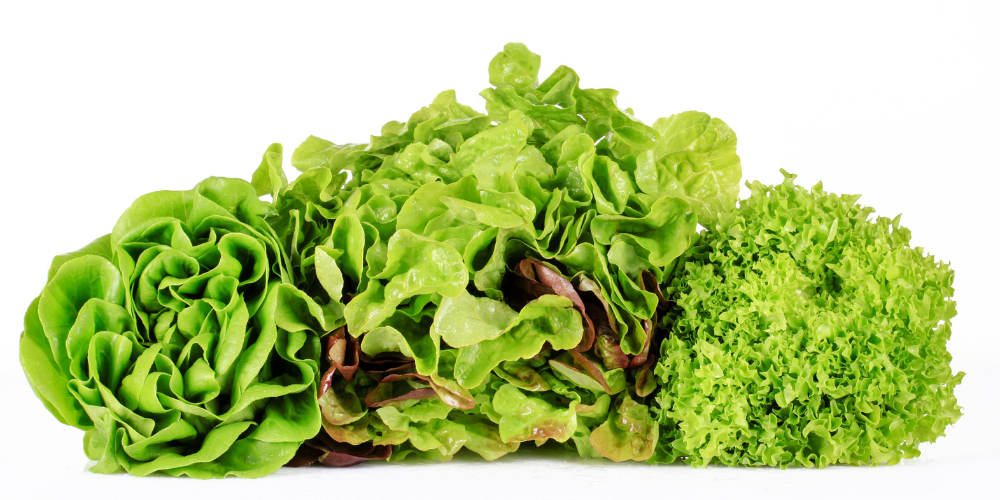
If you have a cat prone to nibbling on your houseplants, you may want to try to feed lettuce instead. A study published in the Journal of Veterinary Behavior found that cats who were given lettuce to eat were less likely to nibble on other plants in the house.
It’s not the only leafy green that can help a cat’s health, though: lettuce has also been shown to reduce cat hairballs. So if your cat likes lettuce, it could help distract them from other things you do not want them to eat!
Final Thoughts
After doing some research, it turns out that cats can eat lettuce! Lettuce is an excellent source of vitamins A and C and fiber. However, it’s important to remember that cats are carnivores, so their diet should consist mainly of meat and other foods with more nutritional benefits than whole-leaf lettuce. Too much lettuce can cause digestive problems for cats, so it’s best to give them only a tiny amount as a treat. Many high-quality foods cater to your cat’s needs if you’re concerned about not getting enough protein.
FAQs (FREQUENTLY ASKED QUESTIONS)
Q: Why is my cat obsessed with lettuce?
A: We hear from people all the time that their cat loves lettuce or that their cats eat salad regularly. Lettuce and greens are excellent for providing your cat with a good water source, bulk, and nutrients. Some cats adore these greens, and cats who could care less, in my experience. No matter what you’re feeding them, it’s essential to monitor what you let your cat eat.
Q: What veggies are toxic to cats?
A: The red blood cells of your cat can be damaged by the consumption of onions and garlic, as well as shallots and scallions; this can lead to anemia. Concentrated onion and garlic products, such as onion soup mix or garlic powder, can also be toxic if consumed in large amounts. Since we don’t want to affect our cat’s digestion or immune system adversely, it’s advisable to steer clear of these things. Many other food options are safer for your cat. It’s not worth taking the risk.
Q: Is iceberg lettuce toxic to cats?
A: Only iceberg lettuce and onions should be avoided, as they are the two most dangerous foods. Onions and iceberg lettuce are bad for your cat’s health because they cause anemia. More acceptable lettuce varieties that aren’t toxic: Butter lettuce, leafy greens, organic lettuce, and green leaf lettuce. Those all contain vitamin k and have small nutritional benefits for cats compared to iceberg lettuce.
Q: What human food can cats eat daily?
A: Oats, corn, brown rice, and even couscous are all human foods that contain a lot of protein that your cat is allowed to eat. Fatty foods should be avoided, and remember that cats require meat, so though you may occasionally give lettuce to your cat, dry food specialized to their body’s needs is always a better choice for a cat’s diet than human food. Always be wise when choosing something for your cat to eat! And in addition, pay attention to what you let your cat eat. Cat food is the number one choice to ensure a cat’s body is getting exactly its needs.

